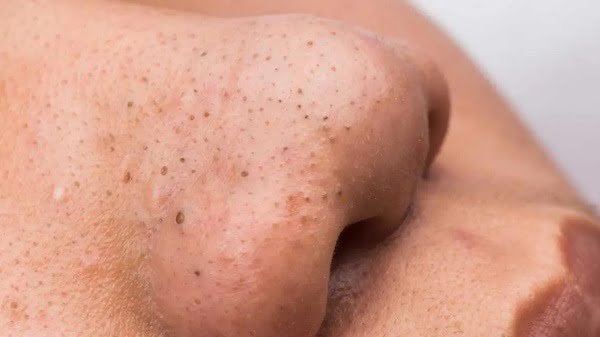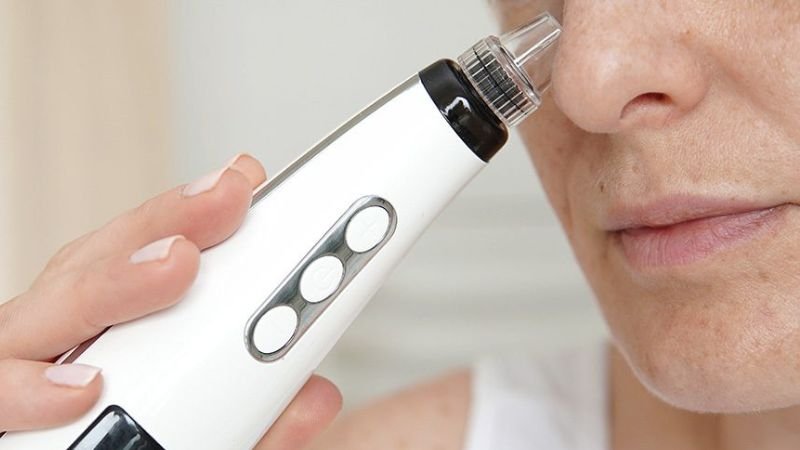Introduction:
Blackheads can be stubborn, pesky blemishes that seem impossible to remove. When faced with a blackhead that won’t come out, it’s essential to approach the situation carefully to avoid causing damage to the skin. In this blog, we’ll explore effective methods for removing stubborn blackheads safely and gently, leaving your skin clearer and smoother.
Understanding Blackheads:
Blackheads, also known as open comedones, are small bumps that appear on the skin’s surface due to clogged pores. They occur when excess oil (sebum), dead skin cells, and impurities accumulate within the hair follicle, oxidizing and turning black when exposed to air. While blackheads are not typically inflamed like pimples, they can be challenging to remove, especially if they are deeply embedded in the pores.
Methods for Removing Stubborn Blackheads:
- Steam and Exfoliation: Start by steaming your face to open up the pores and soften the blackhead. You can do this by placing your face over a bowl of hot water or using a facial steamer. After steaming, gently exfoliate the area with a gentle scrub or exfoliating brush to help loosen the blackhead.
- Use a Blackhead Extractor Tool: Blackhead extractor tools, also known as comedone extractors, are small, metal tools designed to remove blackheads safely and effectively. To use a blackhead extractor, gently press the looped end around the blackhead, applying gentle pressure to push it out of the pore. Be careful not to apply too much pressure or use excessive force, as this can cause irritation and damage to the skin.
- Try a Salicylic Acid Treatment: Salicylic acid is a beta hydroxy acid (BHA) that penetrates deep into the pores to dissolve excess oil and exfoliate dead skin cells. Using a salicylic acid treatment, such as a spot treatment or pore strip, can help loosen stubborn blackheads and prevent new ones from forming. Apply the treatment to the affected area according to the product instructions and allow it to penetrate the skin before gently extracting the blackhead.
- Seek Professional Help: If you’re struggling to remove a stubborn blackhead on your own, consider seeking professional help from a dermatologist or licensed esthetician. They can provide specialized treatments, such as professional extractions or chemical peels, to safely remove stubborn blackheads and improve the overall appearance of your skin.
Preventing Future Blackheads:
- To prevent future blackheads from forming, maintain a consistent skincare routine that includes cleansing, exfoliating, and moisturizing.
- Use non-comedogenic skincare products to avoid clogging pores, and consider incorporating ingredients like salicylic acid or retinoids into your routine to help keep pores clear.
- Avoid touching or picking at your face, as this can transfer bacteria and oil to the skin and exacerbate blackhead formation.
When to Seek Medical Advice for Blackheads?
Persistent or Severe Blackheads:
- If you have blackheads that persist despite regular cleansing and skincare efforts, or if they are particularly severe or widespread, it may be time to consult a dermatologist. A dermatologist can assess your skin condition and recommend appropriate treatments to address stubborn blackheads effectively.
Inflammatory Acne:
- Blackheads are a type of non-inflammatory acne, but they can sometimes progress to inflammatory acne if left untreated. Inflammatory acne is characterized by red, swollen, and painful lesions such as papules, pustules, nodules, and cysts. If you notice signs of inflammatory acne alongside blackheads, such as redness, swelling, or tenderness, it’s essential to see a dermatologist for evaluation and treatment.
Complications or Secondary Infections:
- In some cases, untreated blackheads can lead to complications such as infection or scarring. If a blackhead becomes infected, it may develop into a painful, inflamed lesion known as a pimple or become filled with pus. Additionally, picking or squeezing blackheads can introduce bacteria into the skin, leading to infection. If you suspect an infection or notice signs of scarring, such as dark spots or pits in the skin, it’s crucial to seek medical attention promptly.
Underlying Skin Conditions:
- Blackheads can sometimes be a symptom of underlying skin conditions such as rosacea, seborrheic dermatitis, or hormonal imbalances. If you have persistent blackheads accompanied by other symptoms such as facial redness, flushing, or excessive oiliness, it’s advisable to consult a dermatologist for a comprehensive evaluation and proper diagnosis.
Psychological Distress:
- While blackheads themselves are not typically a cause for concern, they can have a significant impact on self-esteem and emotional well-being, especially if they are severe or difficult to manage. If blackheads are causing you significant distress or affecting your quality of life, it may be beneficial to seek support from a dermatologist or mental health professional who can provide guidance and treatment options.
Conclusion:
Removing a stubborn blackhead requires patience, gentleness, and the right approach. By steaming the skin, using a blackhead extractor tool, trying a salicylic acid treatment, or seeking professional help, you can effectively remove stubborn blackheads and achieve clearer, smoother skin. Remember to be gentle with your skin and avoid using excessive force to prevent irritation and damage. With the right techniques and consistency, you can say goodbye to stubborn blackheads for good.
FAQs related to "How to remove a blackhead that won’t come out "
Stubborn blackheads can be challenging to remove due to factors such as deeply embedded impurities, excessive oil production, and skin inflammation. Additionally, attempting to remove blackheads forcefully or without proper preparation can cause further irritation and make them more difficult to extract.
If a blackhead won’t come out easily, it’s essential to avoid picking, squeezing, or using excessive force, as this can damage the skin and lead to scarring. Instead, try gentle methods such as steam and exfoliation, blackhead extractor tools, or salicylic acid treatments to help loosen the blackhead and facilitate its removal.
Using your fingers to squeeze or pick at a blackhead can cause trauma to the skin and increase the risk of infection and scarring. It’s best to avoid using your fingers and opt for safer, more controlled methods such as blackhead extractor tools or salicylic acid treatments.
The time it takes to remove a stubborn blackhead can vary depending on factors such as the size, depth, and location of the blackhead, as well as the effectiveness of the removal method used. While some blackheads may come out relatively quickly with gentle extraction, others may require multiple treatment sessions over several days or weeks.
If you’re unable to remove a stubborn blackhead on your own or if it becomes painful, inflamed, or infected, it’s essential to seek professional help from a dermatologist or licensed esthetician. They can provide specialized treatments, such as professional extractions or chemical peels, to safely remove the blackhead and improve the overall appearance of your skin.
To prevent stubborn blackheads from forming, maintain a consistent skincare routine that includes cleansing, exfoliating, and moisturizing. Use non-comedogenic skincare products, avoid touching or picking at your face, and consider incorporating ingredients like salicylic acid or retinoids into your routine to help keep pores clear and prevent blackheads from forming.










